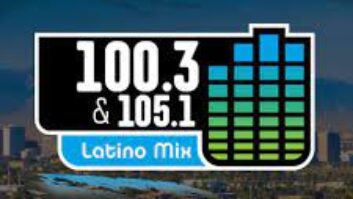(click thumbnail)This photo of Doug Wilson was taken a week before his death. He and Tony Lopez had attempted to reach the KTPL/KDZA FM transmitter site.Doug Wilson and I had a few things in common. These included a transmitter site in Rye, Colo., and a frustration of trying to reach it during winter months. It is one of the hardest transmitters to reach, often inaccessible even with four-wheel drive vehicles and ATVs. Snowstorms dump up to several feet of snow at a time and the ground is something you won’t see until spring.
Doug was instrumental in helping me resolve recent issues with my combiner and a new antenna. We ended up spending many late nights in search of solutions for transmitter issues. After collaborating on numerous occasions and sharing many meals, we became good friends.
It seems as quickly as this friendship progressed, it was taken away. Doug Wilson, who worked primarily as a contract engineer and who was well liked by fellow southern Colorado broadcasters, died after reaching a remote transmitter on Badger Mountain near Wilkerson Pass on Jan. 19.
On foot
I spoke with Doug the morning he left to handle the transmitter failure. He also talked with KTLF/KTPL General Manager Karen Veazey. She told him he could take another person with him and that the station would cover the extra cost. He felt he could handle the situation alone.
Doug left his house at about 10 a.m. to respond. Badger Mountain is approximately 9,500 feet tall and extremely steep. The trip is 5.2 miles from the entrance gate to the transmitter site. Doug apparently traveled as far as he could on his six-wheel ATV, making it three miles before getting stuck. After that, he abandoned the vehicle and proceeded on snowshoe to the site. He traveled two miles on foot in record cold and through above-average snow.
Doug was in contact with several people via the ham repeater after getting the transmitter restarted. His last transmission ended in static but no one suspected than anything was wrong. But when he didn’t return to work the next morning, Doug’s employers at the stations contacted search and rescue. Dr. Ronald Johnston, a member of the board, flew in his private plane to look for him. Authorities set up a command post at the bottom of Badger Mountain and sent teams into the field to look for him.
It didn’t take those teams long to find Doug in the transmitter building. He had died from massive coronary disease. He was just 53. Contract engineer Harry Russell, who also works for Light Praise, stayed at the command post until search and rescue brought Doug’s body down.
The news was shocking to me. In the time spent with him, I found that Doug was an extremely health-conscious individual. He was thin, and a vegetarian since the age of 18. I would have never expected something like this would happen to someone like him.
Doug was not married. Another sad note is that his mother Betty, age 80, died two weeks after he did. He left no immediate family.
Alone
Doug’s death apparently was from health problems. But the circumstances also shed light onto a serious issue of broadcast engineers traveling to remote sites alone.
When we don’t have to worry about weather, we often have to think about attacks from mountain lions and bears, animals commonly seen at many of these sites. Many of us are accustomed to going to such sites alone and we never think that anything will happen to us.
Another broadcast engineer died at a transmitter site not long ago, reportedly electrocuted and not found for two days.
These incidents have opened my eyes to the fact that things can happen. When they do, who is going to be around to help?
I will not snowshoe up to any remote site any more. Motorized vehicles tend to frighten away most animals in forest areas, making the trip safer. If I can’t reach a remote site by motorized vehicle of some sort, I will no longer go.
Some companies won’t pay for two people to go to a transmitter site at the same time. Often, it’s not even feasible to send two people to a site. In our industry, generally the decision is left up to the engineer. Perhaps broadcast companies should take the call out of engineers’ hands and mandate that no engineer can travel to a remote transmitter site alone. Perhaps the industry needs new policies like that. And if an engineer does have to travel to a site alone, how about a requirement that the engineer must be checked on every so often, even if by radio?
I don’t know if the presence of another person might have helped in Doug’s case. Perhaps if someone had been with him, they might have had a chance to try to save him. Regardless, the industry should debate whether we need policies to ensure help will be close by and our calls for assistance will be heard.













